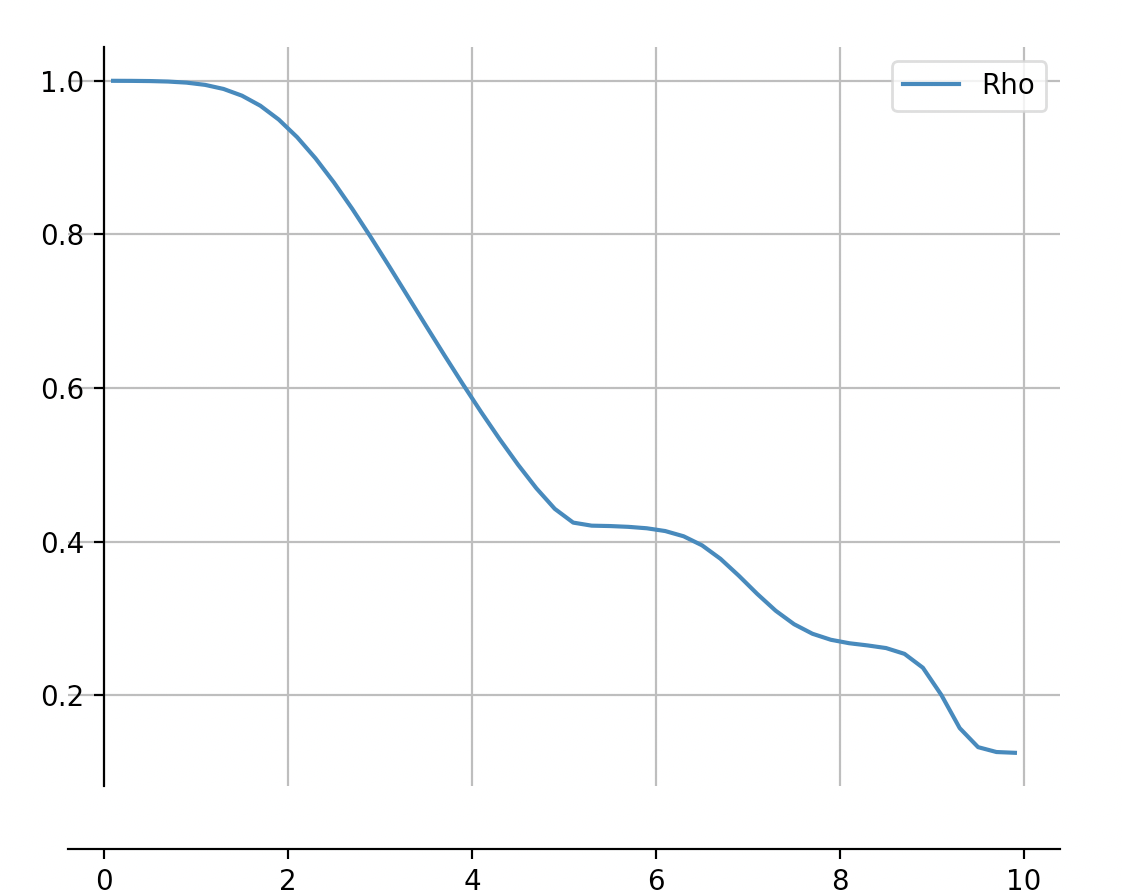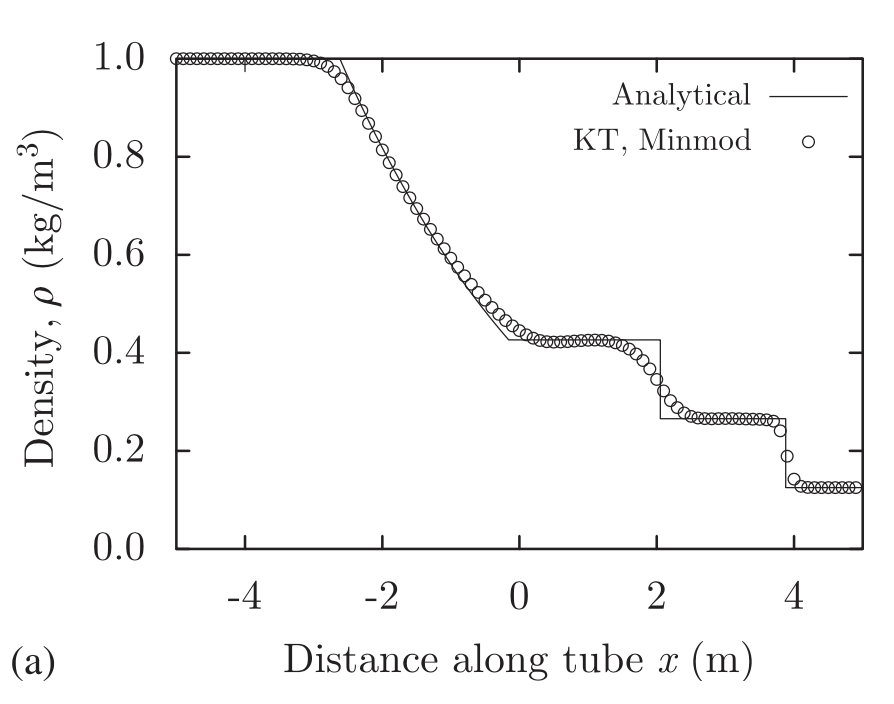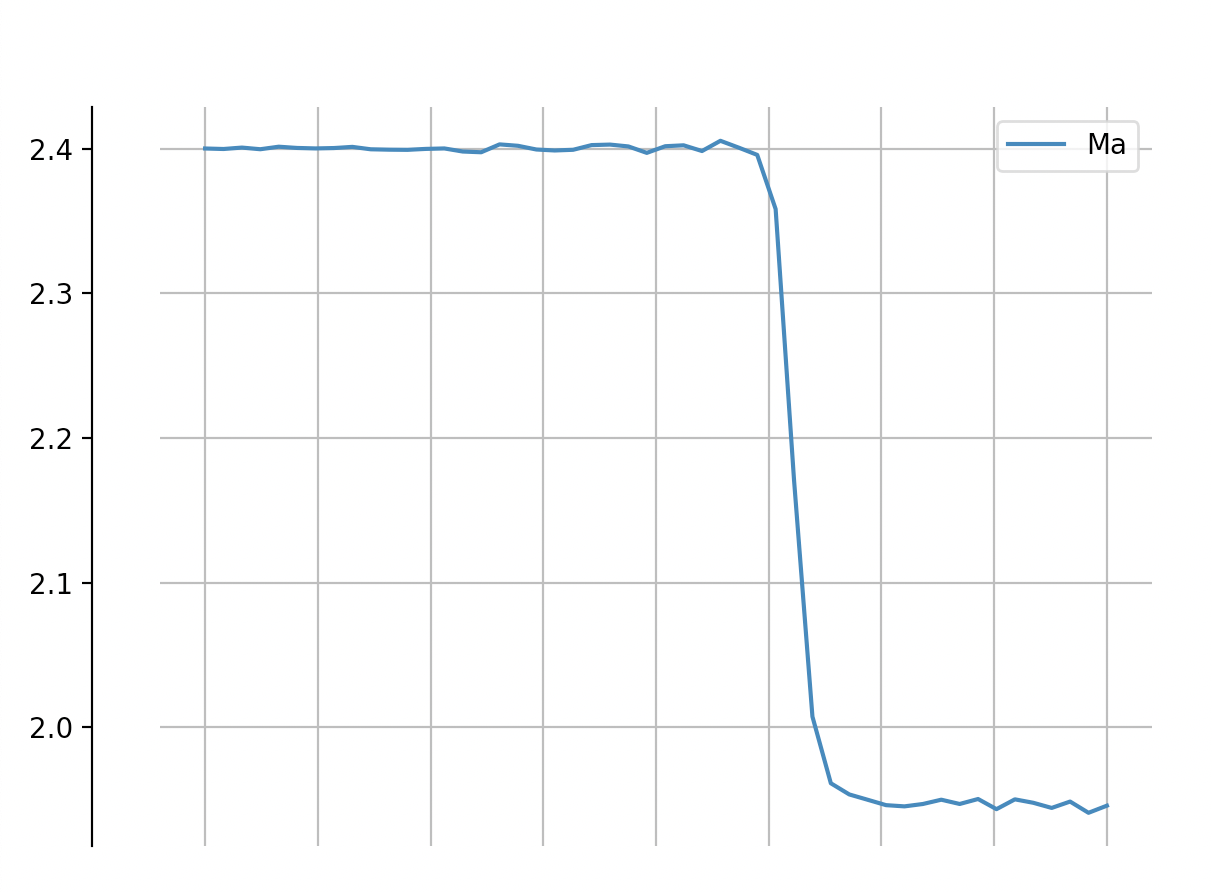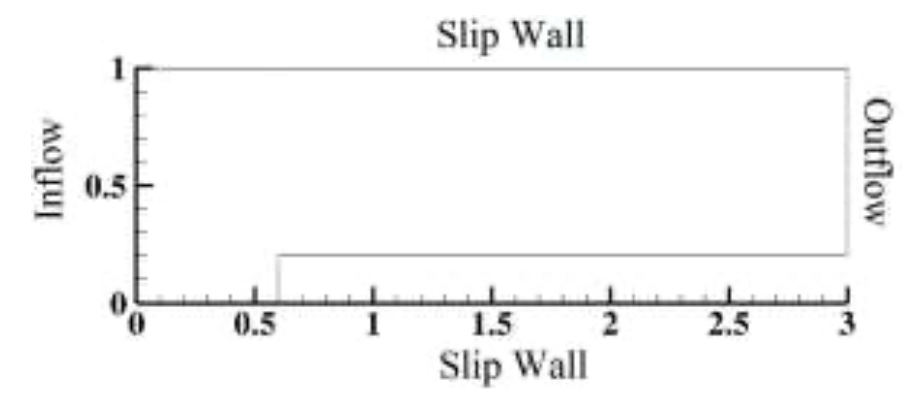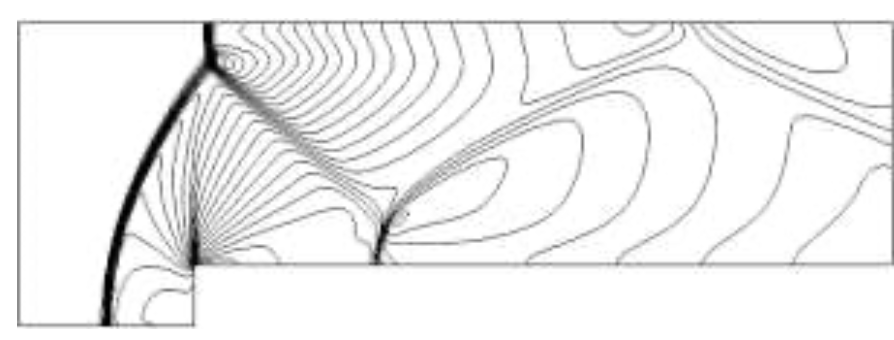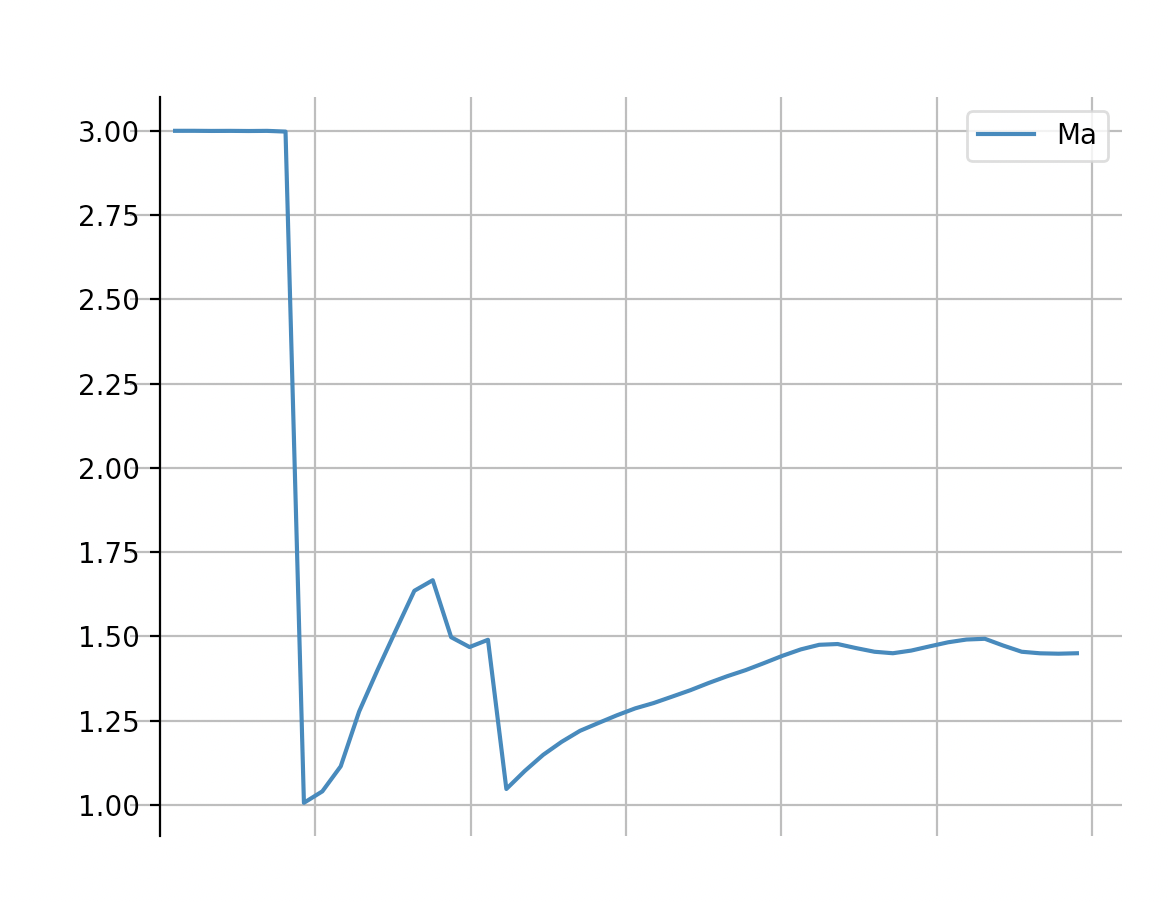The project is an attempt to exploit the potential of Taichi language in the field of computational simulation of compressible fluids by finite-volume-method.
- exploit Taichi language in expressiveness, parrallezation, GPU utilization, and etc.
- try to utilize Taichi's data oriented features for scalability
- construct a ground base CFD framework for structured mesh with FVM
- concentrate on transonic to supersonc regime for compressible phenomena, with posiible modifications for near-incompressible low Mach number fluid simulations
- availability for complex boundary shapes, extensions to high-order methods and etc., as a discussion material for physical based against visual effect biased simulations
The introduce of multiblock structured mesh and FVM features allow for simulation capabilities of various field shape and complex boundaries without losing the potential easier extension to high-order interpolation methods in both space and time differentiations, multigrid and etc.
Current features are concentrated on basic program structure and shockwave-catching convection methods as a start.
Current Features:
Finite volume method2D structured mesh- Compressible fluid simulation with shockwave catching capabilities and heat transfer
- Euler and Navier-Stokes equations (
WIP, laminar diffusion coefficients, validation still needed with test cases) - Convection items suitable for shockwave catching using Godnuv type Riemann solvers: van Leer / modified Roe / Roe-RHLL methods[1]
- Physical quantities on the cell surface and gradients are calculated by interpolation/cell-integration with adjacent cells (
Currently simple 1st to quasi-2nd order) - RK3 time marching
- Dual time marching[2] with RK3 (
WIP, convergence problems exist and validations are needed) - One virtual votexes on every block edge for boundary calculations
- Multiple types of boundary conditions: supersonic inlet/outlet, symmetry, non-slip/slip wall
- Interconnection boundary data transfer between block surfaces
- Simple GUI output on-the-fly for field result, with options to draw grid nodes, cell centers, velocity arrows or surface normal direction arrows
- Simple curve plot on-the-fly (
Currently one line with evenly spaced monitor points only)
Separation of simulation logic, variable allocations and gui works into main MultiblockSolver, BlockSolver and Drawer classes.
The input configurations are written case by case in script files, examples are shown in Test cases section and case_*.py files.
TODO: more descriptions
The shockwave tube is an usual validation case of shock-wave capturing method for stability and dissipation level. The configurations are taken from [4]. The iniital rest properties on the left/right are 1.0/0.125 (density), 1e5/1e4 Pa (pressure) and 348.4K/278.7K (temperature), respectively. Results at about 7ms of time are presented for comparision.
Density curves shows good stability but some level of numerical dissipation. Further comparisons can be made after methods with higher-order precisions along with improved bc handling or interpolation methods are added
The case is modified replication from [3] for validation of shock wave catching capabilities in one oblique shock against an angled wedge with inflow Mach number 2.4.
The result shows straight line shaped shock front and appropriate turning angle. Mach number across a x-direction line is plotted. Compared with theoretical precise answer, some level of oscillation and a small higher number is observed below shock wave front. Some bug fix or optimisations still needed.
The case is also from [3] for validation on blunt type shock waves. Mach number is 2.5, but different Mach number is used in gif animation simulation (updates needed).
The case also utilizes circular shaped grid mesh in favor of FVM method, a cutting boundary between surfaces in i0 and iend direction of the single block to provide validation coverage on interconnected data transfer.
The shock wave simulated with Roe-RHLL method is showing appropriate shock wave shape and carbuncle-free features. Surface Cp curve comparisions can be added.
The case is also drawn from [3]. The simulation configurations and density contour in the thesis is shown below.
The case is used as validations for shockwave interactions(reflections against wall). And it also covers multi-block issues using two rectangular grid blocks.
The result shows appropriate shock shapes using van Leer method. More validations are needed as dual-time marching is caught in convergence problems. And further precise time-related qunatitative analysis is needed
- Bug fixes and equation implementations checks
- Can Taichi's autodiff feature be applicated on FVM?
- Higher order method and interpolations with possible 2 virtual vortexs on the surface, for example
- Unstructured mesh FVM
- Multigrid/multi-resolution, implicit time marching
- Levelset, multiphase simulations, fluid-solid interactions, etc.
- Performance issues
